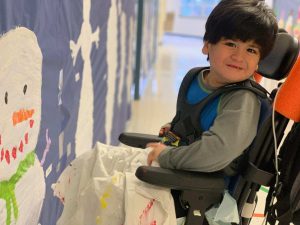 I have a love/hate relationship with knock knock jokes. For the love side, they are fun, silly, occasionally clever, and a great way to joke around with young kids. I’ve even introduced them as replacement behaviors when children want to engage with a peer but don’t know how. “Want to hear a joke?” is much better than “Our teacher is stupid and ugly” or simply pushing a peer to get their attention. So I know my fair share of knock knock jokes. On the hate side, once a child tends to learn a good knock knock joke they tend to use it repeatedly, expecting you to find it funny each and every time. And then there is that developmental window before children understand why the knock knock jokes are actually funny to other people. They create their own – “knock knock, who’s there? Cow? Cow Who? Cow cat dog dance with meeeee and the CHICKEN!” And you have to laugh even though it makes no sense.
I have a love/hate relationship with knock knock jokes. For the love side, they are fun, silly, occasionally clever, and a great way to joke around with young kids. I’ve even introduced them as replacement behaviors when children want to engage with a peer but don’t know how. “Want to hear a joke?” is much better than “Our teacher is stupid and ugly” or simply pushing a peer to get their attention. So I know my fair share of knock knock jokes. On the hate side, once a child tends to learn a good knock knock joke they tend to use it repeatedly, expecting you to find it funny each and every time. And then there is that developmental window before children understand why the knock knock jokes are actually funny to other people. They create their own – “knock knock, who’s there? Cow? Cow Who? Cow cat dog dance with meeeee and the CHICKEN!” And you have to laugh even though it makes no sense.
So when Joey discovered knock knock jokes on his device I celebrated ecstatically and braced myself for what was to come.
Even the discovery of the jokes was an accident. During the beginning of a recent session with Joey I realized that almost none of his current vocabulary words were on his device. In trying to retrieve the old words we accidentally added ALL of the words and programs to his screen. We had one session where Joey had access to everything before someone more talented with the device than I am returned it to its correct setting.
With his access to a new, larger vocabulary, Joey flew through the different word menus and new choices, trying out words, deciphering what pictures went with what word, and where these new words were hiding. And then, he found gold.
Joey discovered the pre-programmed jokes. There are riddles, general jokes, and knock knock jokes. And they are horribly fantastic.
“Knock, knock?” (conversation partner responds who’s there?)
“Luke” (pause while conversation partner responses with “Luke Who?”)
“Luke through the peephole and find out!”
There are also the pre-programmed phrases of “Ha ha ha” and “That was a good one.”
It’s amazing. I am not sure that Joey has heard or understands knock knock jokes, but he knows humor when he finds it. Every time he selected a joke he cracked up laughing.
Yet even introducing knock knock jokes requires a bit of instruction. We had to work on the sequence and pacing of the joke itself. First, it’s appropriate to actually ask someone if they want to hear a joke. Then, you can select the “knock knock” icon. From there, you actually have to wait on your conversation partner’s response in order for the joke to be funny. Although at first Joey could crack himself up, I found that we needed to practice the script in order for these jokes to be ready for the road. Luckily, Joey is highly motivated by this activity.
As necessary when you teach any kindergartener new jokes, this also involved teaching Joey when it was OK and not OK to tell jokes. I have rarely seen Joey as upset with me as he was when I insisted on pausing our joke telling to do more academic work. He complied, but not without asking me (just once) “Do you want to hear a joke?” in the middle of the lesson. I appreciated that he asked first before just going to the joke page – most kindergarteners interrupt with the joke first before you have a chance to redirect them.
Our recent sessions have been nicely sandwiched in between joke telling and working, and Joey’s family and I have already memorized all of the knock knock jokes. I don’t care how lame the joke is, watching Joey crack up at delivering the punchline of the joke never gets old.


